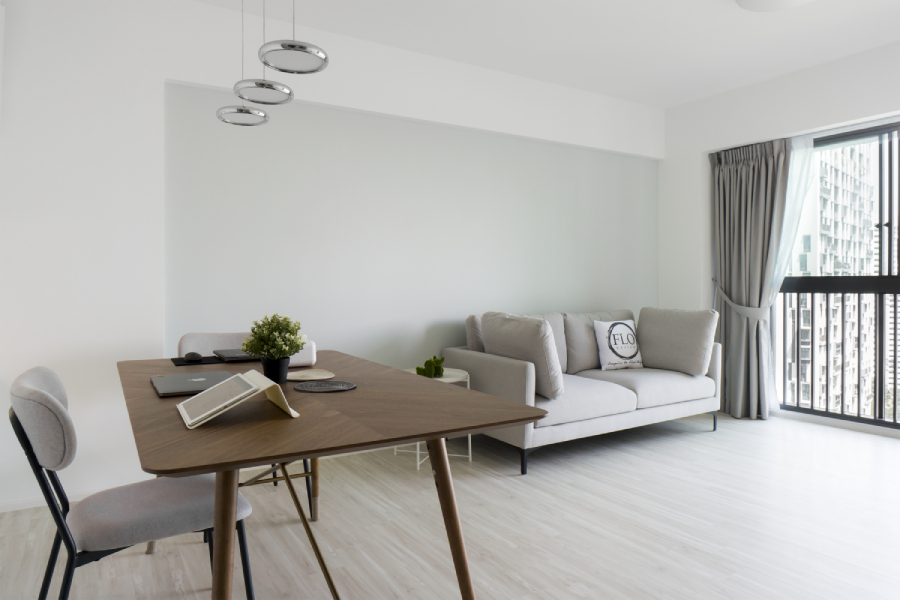
Over the past few years, the design world has been quietly embracing a softer, more fluid aesthetic. Curved furniture and organic shapes, once reserved for niche interiors, have become centrepieces in contemporary homes. These elements offer more than just visual interest; they create calming, inviting spaces that break free from the rigidity of straight lines and sharp corners.
A natural antidote to modern rigidity
Modern architecture has long leaned towards the linear: sleek surfaces, clean angles, and structured forms. But this precision can sometimes feel clinical. Curved furniture, whether it’s an arched sofa, a rounded coffee table, or an oval dining bench, introduces a sense of ease and approachability. The visual softness of rounded silhouettes brings a human touch, making rooms feel warmer and more inviting.
Organic shapes, inspired by nature, follow a similar philosophy. Think of pebble-shaped rugs, wave-like shelving, or lighting fixtures that mimic flower petals. These forms are inherently soothing and intuitive. They guide the eye gently around a space, evoking the same comfort we find in nature.
Elevating compact spaces with curves
Singaporean homes, particularly HDB flats and condominiums, are often compact. This presents a unique opportunity: curved designs can make small spaces feel more open. Without harsh corners, the flow of a room improves, and furniture appears less bulky. A cleverly placed curved armchair or rounded kitchen island can break up visual monotony while improving circulation paths.
For homeowners seeking thoughtful HDB BTO interior design in Singapore, incorporating curved elements can strike a balance between function and finesse. A rounded headboard in a small bedroom or a custom-built oval mirror in a narrow entryway adds character without overwhelming the space.
The psychology behind curves
There’s a reason curves resonate deeply with us. Numerous studies in environmental psychology show that people find curved forms more pleasant and less threatening than angular ones. Curves suggest comfort, safety, and movement—all things we subconsciously crave in a home environment.
This emotional response explains why more designers are opting for organic shapes in communal areas such as living rooms and lounges. A circular sofa encourages face-to-face interaction. An asymmetrical, undulating bookshelf breaks down rigid spatial expectations, allowing creativity to flow. These elements don’t just look good—they feel good.
Materials matter: pairing textures with curves
The material palette plays a critical role in how curved furniture and organic shapes are perceived. Plush velvets, boucle fabrics, and natural wood grains enhance the softness of curves, making them even more tactile and inviting. On the other hand, using glass or metal in curved forms creates a modern, almost sculptural presence.
When incorporating these shapes, it’s important to consider contrast. A curved rattan lounge chair paired with angular terrazzo flooring creates a compelling tension that adds depth to the room. For those working with a condo interior designer, these tailored material choices can make all the difference, elevating the space from functional to unforgettable.
Customisation and craftsmanship
Curved furniture often requires more craftsmanship than its linear counterparts. The precision needed to create seamless bends, whether in wood or upholstery, reflects a commitment to quality and design excellence. As a result, many homeowners are turning to custom solutions to bring their vision to life.
A bespoke curved feature wall, for instance, can become the focal point of a modern home. Whether clad in timber slats or rendered in microcement, these organic forms add architectural interest and depth. Similarly, custom curved cabinetry in a kitchen or bathroom maximises every inch while softening the overall feel of the space.
Curves in future-forward interiors
This trend is more than a fleeting design moment—it’s part of a broader shift towards biophilic and human-centric design. As we spend more time indoors, our living environments need to do more than serve practical needs; they must nurture our wellbeing.
Curved furniture and organic forms offer a subtle yet powerful way to achieve this. They provide contrast to our digital, grid-based lives, inviting us to slow down, engage our senses, and feel at ease in our surroundings.
A design philosophy that flows
Curved furniture and organic shapes aren’t just stylistic choices—they’re reflections of a deeper desire for harmony, movement, and comfort within our homes. By incorporating these elements thoughtfully, even the most compact or modern spaces can exude a sense of softness and soul.
At Flo Design, we believe in creating interiors that are not only stylish but deeply personal and liveable. If you’re looking to explore organic forms and flowing shapes in your next renovation, our design experts are here to help you bring that vision to life. Explore more design inspirations and ideas with us at Flo Design.




